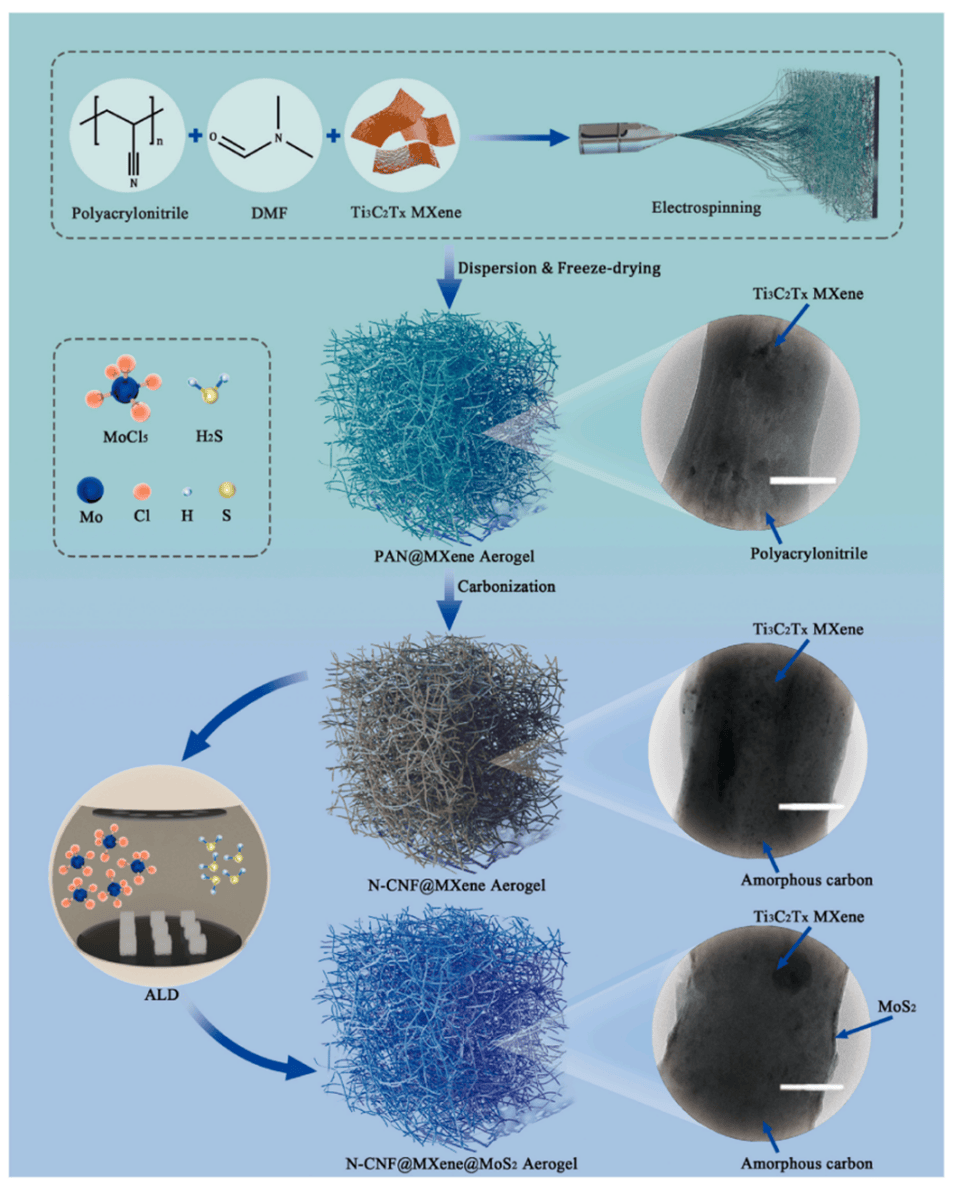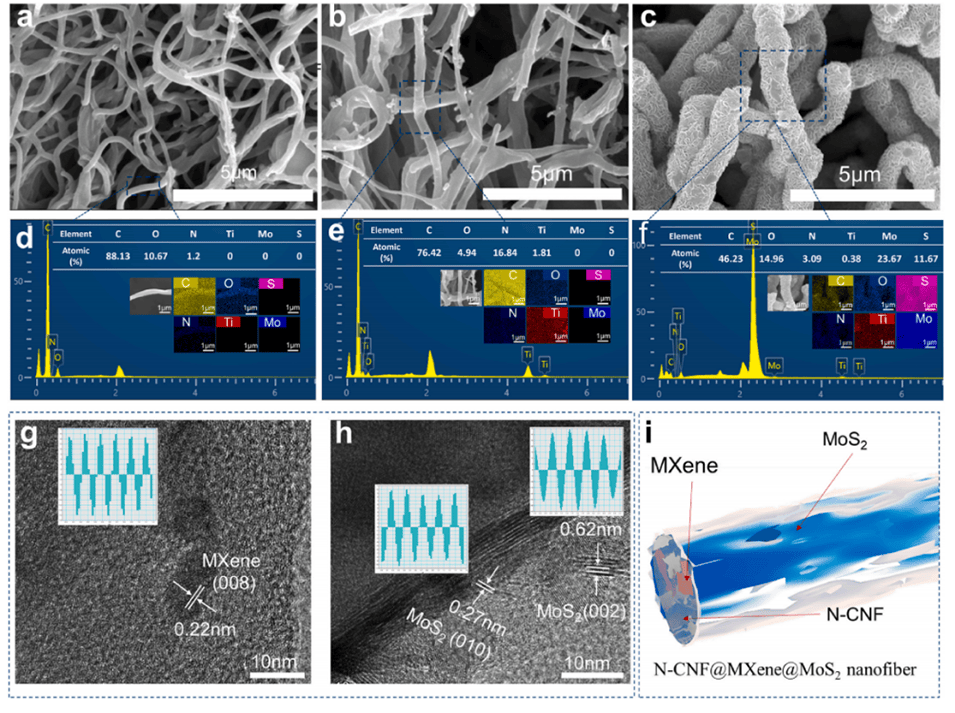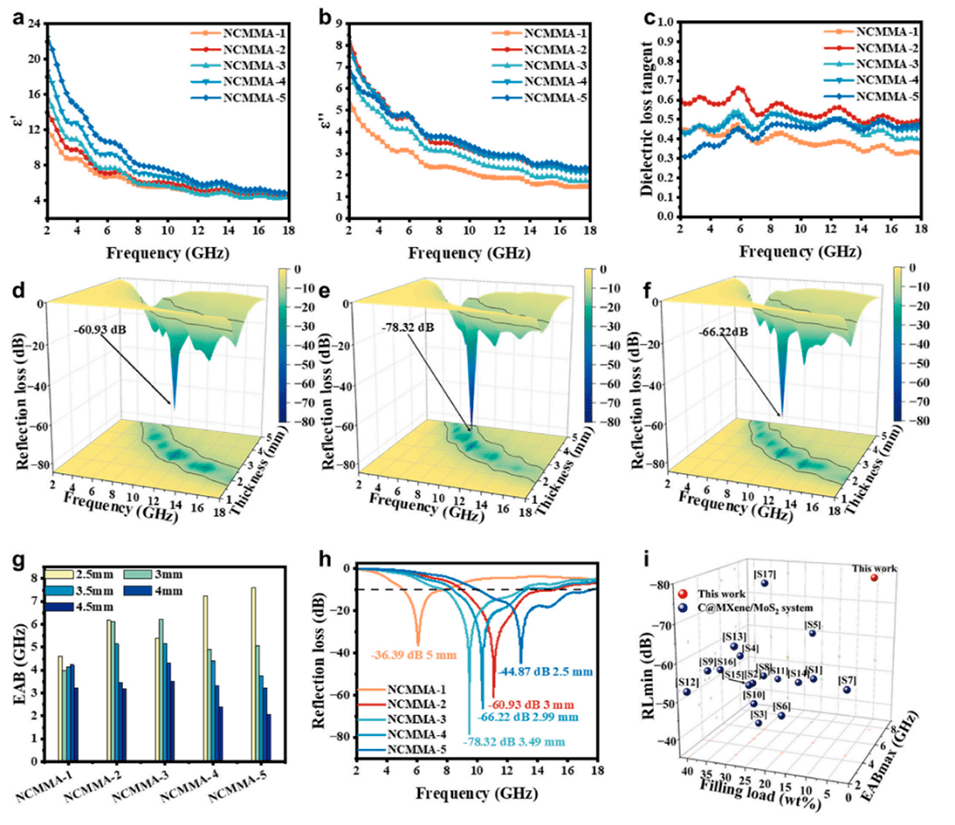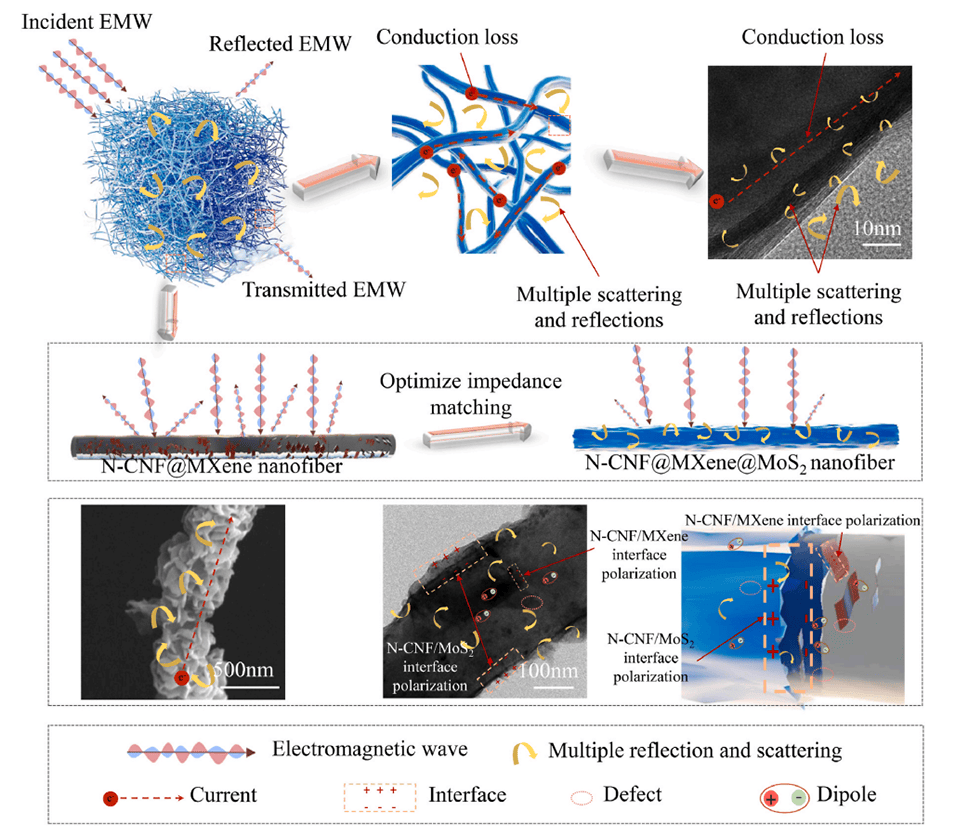Hits: 892 img
N-CNF@MXene @MoS₂ Aerogel (NCMMA) preparation process:
1、Preparation of PAN@MXene Aerogel (PMA)
Firstly, multilayer MXene solution was prepared according to the reported method. Then, the nanofibers were prepared by electrospinning mechanism, and the obtained PAN and PAN@MXene nanofiber films were dispersed and frozen, and then freeze-dried to obtain PAN aerogel and PAN@MXene aerogel (PMA).
2、Preparation of N-CNF@MXene Aerogel (NCMA)
The PMA is placed in a ceramic boat, pre-oxidized in an air atmosphere, and then annealed in an Ar atmosphere. According to the mass fraction of MXene in the electrospinning solution, the resulting aerogel is labeled as n-CNF@MXene aerogel. Before ALD treatment, NCMA needs to be treated with 180s plasma
3、Preparation of N-CNF@MXene @MoS₂ Aerogel (NCMMA)
NCMMA was prepared by modifying MoS₂ on NCMA by atomic layer deposition (ALD).

FIG. 1. Schematic diagram of NCMMA preparation process (scale of 100 nm in TEM image).

Figure 2. SEM images of microscopic morphology of (a) NCA, (b) NCMA, and (c) NCMMA. (d) Energy Dispersive spectroscopy (EDS) and quantitative analysis of elements C, N, O, Ti, S and Mo in NCA, (e) NCMA, and (f) NCMMA. (g) TEM images of microscopic morphology of NCMA and (h) NCMMA. (i) N-CNF@MXene @MoS₂ nanofiber schematic diagram.

Figure 3. Electromagnetic parameters and microwave absorption performance of the NCMMA series.

Figure 4. Mechanism of action of NCMMA absorbent.
Summarize:
In this study, two-dimensional MXene nanosheets were embedded in N-CNF by an electrospinning, freeze-drying, anneal-atomic layer deposition (ALD) process. In this method, MXene is distributed in a microscopic island chain in the absorber, and the overall distribution is uniform, which alleviates the stacking problem of MXene nanosheets, and forms a three-dimensional conductive network with rich heterogeneous interfaces.
N-CNF@MXene aerogel (NCMA) was modified in situ by atomic layer deposition (ALD) to obtain N-CNF@MXene @MoS₂ aerogel (NCMMA). This method preserves the porous structure of aerogel while constructing core-sheath nanofibers and multistage heterogeneous interfaces, improves impedance matching and significantly improves microwave absorption performance. As a result, the NCMMA absorber has a minimum reflection loss (RLmin) of -78.32 dB (3.49 mm thickness) at 9.49 GHz. At a matching thickness of only 2.5 mm, the maximum effective absorption bandwidth (EABmax) is 7.58 GHz. The new strategy for designing and preparing highly efficient microwave absorbing materials proposed in this study can provide reference for developing lightweight stealth coatings in the future.